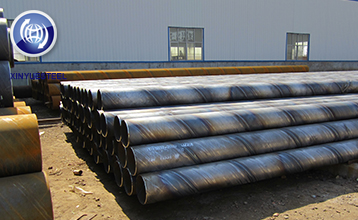Ferroalloys may change from a double increase in supply and demand to an increase in supply and demand
Jun. 21, 2021
May ferrosilicon futures prices fluctuated and rose. As of the close of trading on May 28 (last Friday), the price of the ferrosilicon 2109 contract rose by 520 yuan/ton in May, or 7.01%, reaching 7934 yuan/ton. The spot price of ferrosilicon showed a trend of rising sharply throughout the month. From the perspective of steel plant tenders, a large steel plant in Hebei Province has a late tender date but the price has increased, from 6,800 yuan/ton in April to 7,700 yuan/ton. Basis bottomed out sharply in May and rebounded.
In May, the price of manganese and silicon fluctuated sharply and rose somewhat. As of the close on May 28, the contract price of manganese silicon 2109 rose 320 yuan/ton in May, or 4.68%, to 7464 yuan/ton. The spot price of manganese and silicon has risen, and the spot price in the north has risen from 6,875 yuan/ton to 7,150 yuan/ton. Judging from the bidding of steel plants, the bidding date of Hegang Group was late but the price increased. The bidding price in early April was 6,900 yuan/ton, and it rose to 7,250 yuan/ton in May. In May, the manganese-silicon basis was dominated by high-level fluctuations.
From the perspective of supply and demand, ferroalloy futures are currently in a stage of double increase in supply and demand.
The supply and demand of ferrosilicon is still growing significantly
From the perspective of ferrosilicon, due to factors such as rising thermal coal prices and rising electricity bills, the profit of ferrosilicon has fallen, coupled with policy restrictions on electricity and production, the supply has fallen from the previous month, but the supply and demand still increased significantly year-on-year.

In April 2021, the national ferrosilicon output was 503,000 tons, a year-on-year increase of 28.11% and a month-on-month decrease of 4.1%. The output of ferrosilicon in April was lower than that in March, and the output in March was lower than that in January. The main reason was that cities with poor energy consumption control assessment in Inner Mongolia began to exert efforts in March. For example, the production of ferrosilicon plants in Baotou City dropped rapidly in mid-March. In addition, Inner Mongolia, Gansu and other places introduced policies to increase electricity tariffs for controlled and eliminated capacity in March. After April, manufacturers in these areas failed to effectively resume production, but ferrosilicon production continued to increase year-on-year, setting a record high. The price of thermal coal skyrocketed in May, and the profit of ferrosilicon was not as good as before.
15% of the demand for ferrosilicon is in magnesium. According to statistics from relevant agencies, China's magnesium ingot production in April 2021 was 72,400 tons, a decrease of 0.01% from the previous month and an increase of 6.30% from the same period last year. Relevant agencies estimate that the domestic output of magnesium ingots in May will be 74,000 tons. The main demand for ferrosilicon is in the steelmaking industry. Steel production continues to climb. According to data from the National Bureau of Statistics, my country’s average daily crude steel output in April was 3.262 million tons; crude steel output was 97.85 million tons, an increase of 13.4% over the same period last year; the cumulative crude steel output from January to April was 374.65 million tons, compared with last year. An increase of 15.8% over the same period. From the perspective of downstream demand, the downstream of the black industry chain are all aspects of economic life, mainly real estate, infrastructure, machinery, automobiles, home appliances and other industries. After experiencing the impact of the new crown pneumonia epidemic, these industries are currently recovering. Due to the low base in 2020, the data in 2021 will be higher year-on-year, and the month-on-month comparison has not significantly weakened. According to data from the National Bureau of Statistics, from January to April, the newly-started area of houses nationwide was 539.04 million square meters, an increase of 22.8% year-on-year; my country’s fixed asset investment reached 1,34804 billion yuan, an increase of 19.9% year-on-year; my country’s metal cutting machine tool output was 210,000 units, a year-on-year increase of 57.7%; national automobile production was 8.658 million units, a year-on-year increase of 53.4%, exceeding the level of 2019, but not as good as 2018; steel exports were 25.65 million tons, a cumulative rebound of 24.5%. As export profits improve, export volume is expected to continue to rise.



